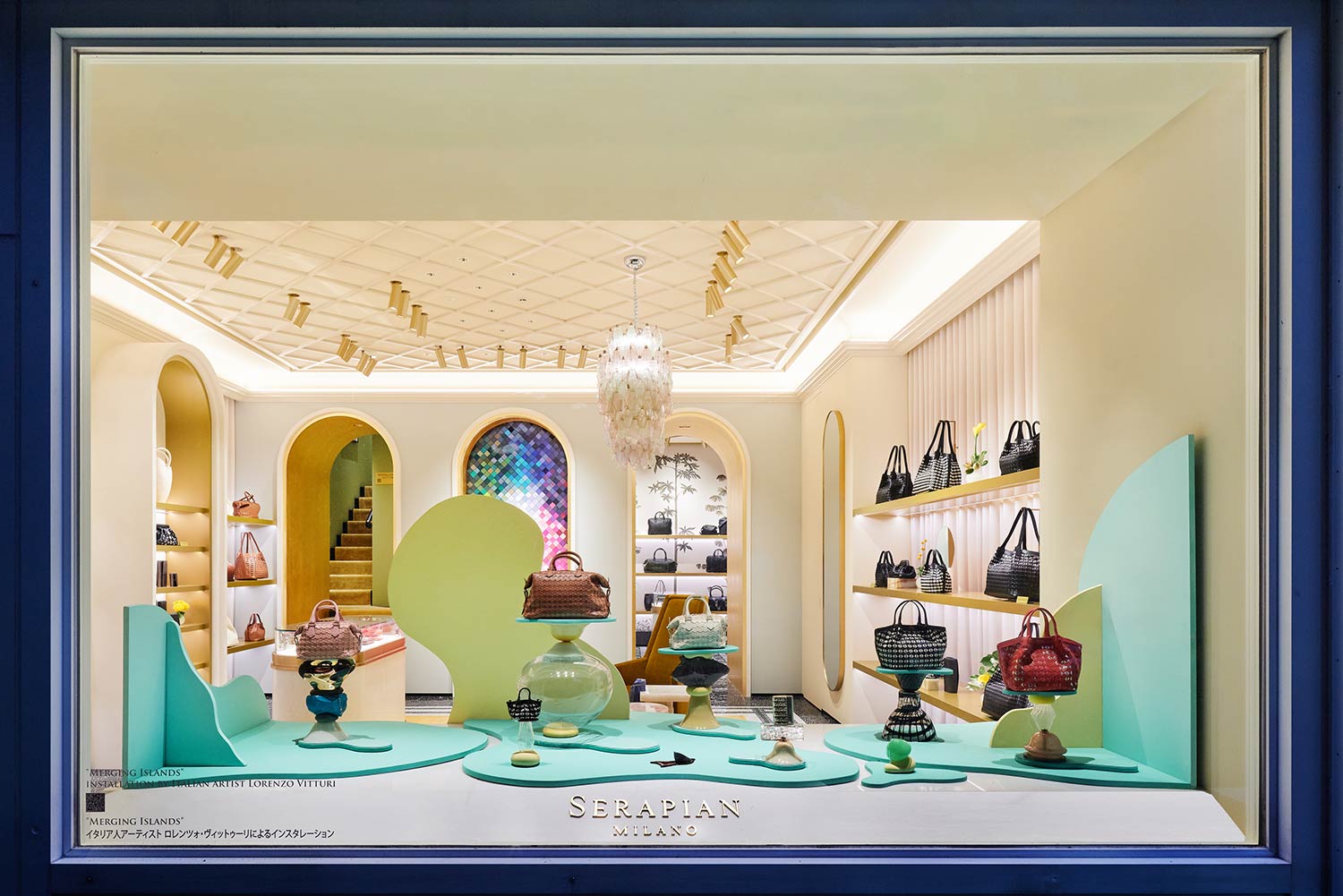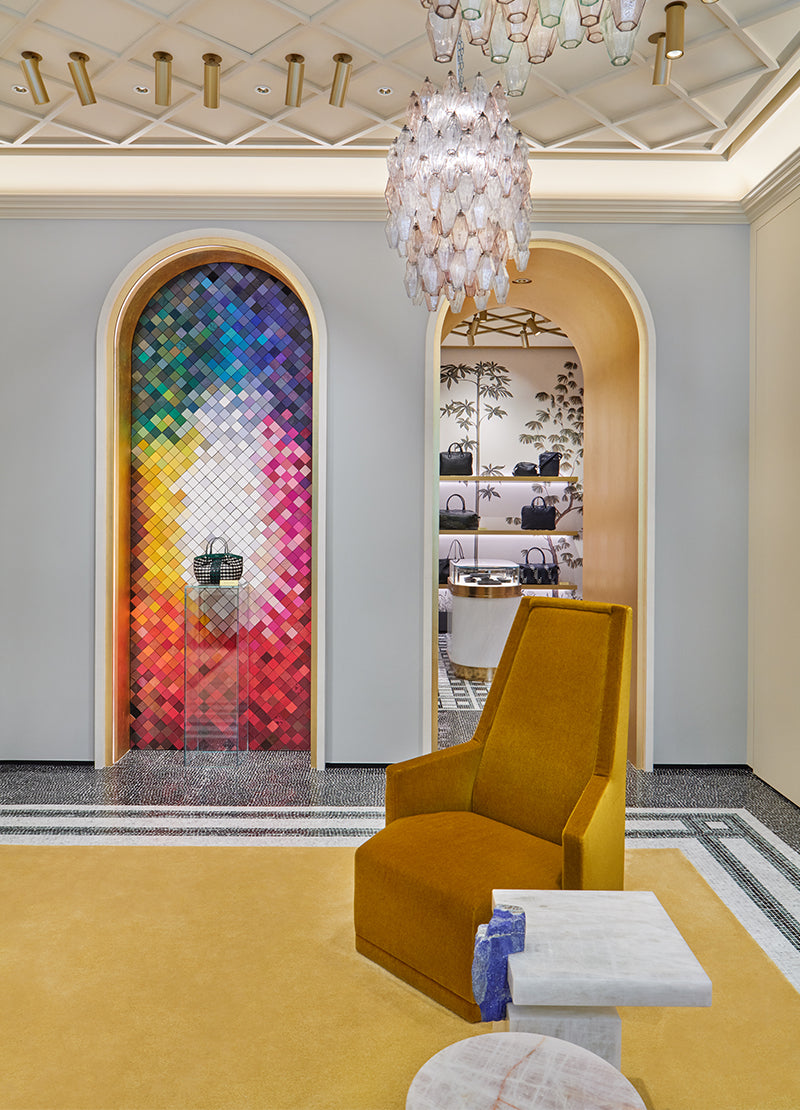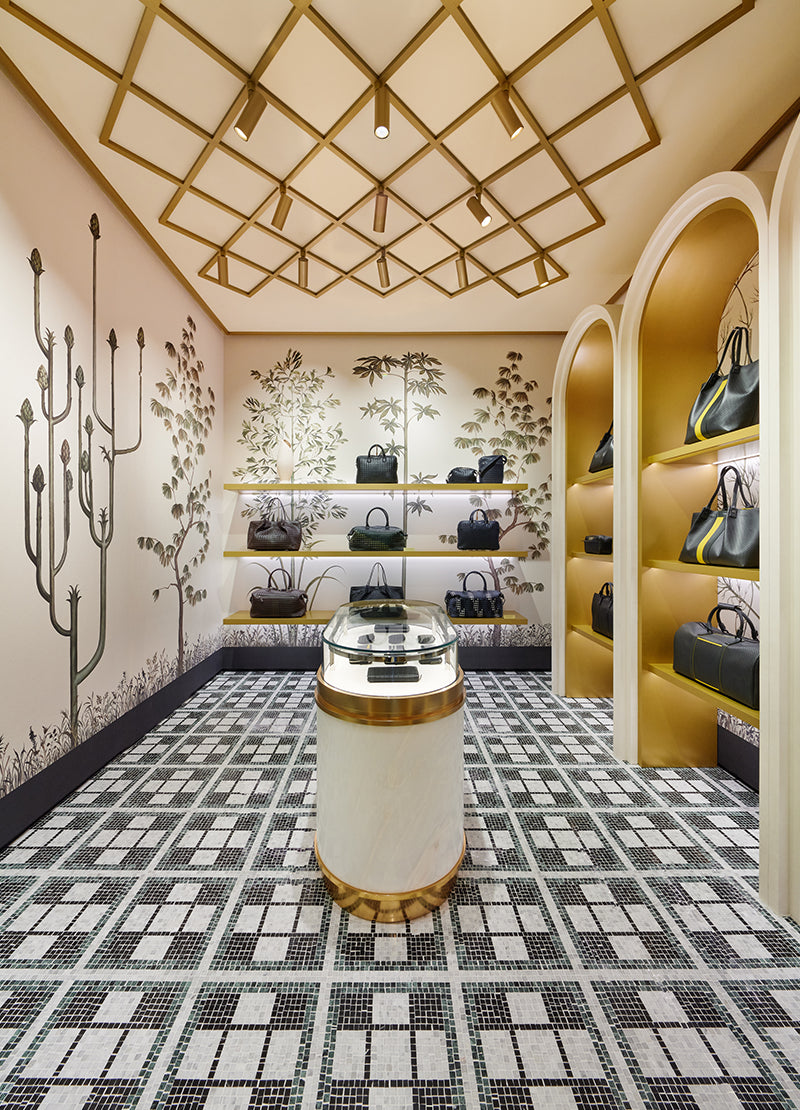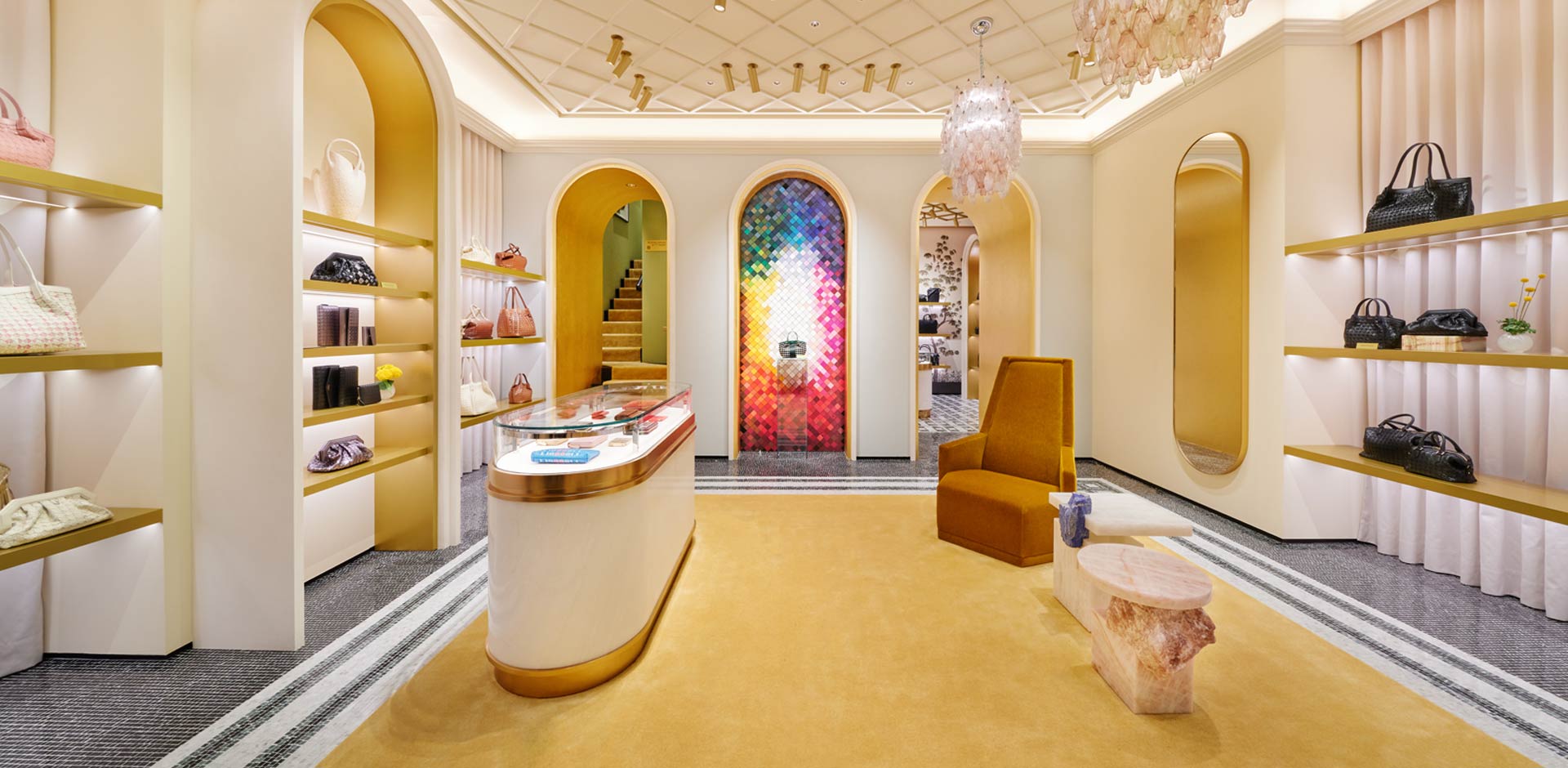Offering an elevated, quintessential Milanese experience in the heart of Ginza, Serapian invites guests to discover the best high craftsmanship and design, unveiling the brand’s universe through a curated interior that reflects its home city’s unique approach. The store will offer Japanese customers leather creations and accessories for men and women, with a special attention to the bespoke offering typical of Serapian.
The two-floor, 200 square metres boutique is a reference to Serapian’s Milanese HQ of Villa Mozart, conceived by Piero Portaluppi, an architect whose modern style helped shape the city’s distinctive aesthetic, also cementing it as one of the world’s most architecturally charming locations of the 20th century. The store’s facade in Maria Theresa Yellow nods to the recurring shade of Milanese buildings, while the door is framed by a feature that replicates the villa’s entrance.
The windows feature artworks by Venetian artist Lorenzo Vitturi, who worked closely with Murano artisans to create totem-like sculptures to elevate the products on display. This cements Serapian’s role as a supporter of the arts, in keeping with Serapian’s tradition, as the family’s inner circle in the 1950s included some of the time’s most celebrated artists, among which was Giorgio de Chirico.

For the setup of the display windows in the new Serapian store in Ginza, I created a series of sculptural supports crafted in my Murano studio, combining elements of blown glass, tempered cotisso glass, and wooden shapes painted with natural pigments and covered in Serapian leather. The idea was to have my world of organic and sinuous forms interact with the shapes of Serapian’s creations, using the windows of the new space in Ginza. As the origins of the Maison are intertwined with Venice this was an opportunity to relate two geographically distant but, in this case also close islands”
Stepping inside Villa Serapian Ginza is like being transported into a Milanese residence, a 360 immersive experience with vintage design mixed with art and contemporary elements. A guest’s first encounter with the space involves a refined interior on the ground floor, with bespoke marble mosaic flooring (made in Italy and applied by Italian artisans), walls covered in precious Dedar textiles and a Carlo Scarpa Sailing chandelier dominating the room. Unique works in the space include a 1960s piece by sculptor Riccardo Scarpa, marble tables from Budri featuring semi-precious gemstones, and an installation by Lorenzo Vitturi featuring venetian glass, as well as furniture by Marta Sala Éditions. The room is anchored by a panel showcasing an impressive leather mosaic, giving an overview of the richness of Serapian’s colour and leather possibilities while exploring an artistic interpretation of the full spectrum of hues and materials on offer.
An arched passage leads to a room imagined as a winter garden, with a custom mosaic motif on the floor and hand painted wallcoverings by Pictalab characterised by a botanical motif inspired by Casa Degli Atellani, Portaluppi’s historical private residence in Milan. A discreet staircase featuring a metal mosaic sculpture by De Castelli leads to the first floor. Walking upstairs, guests are accompanied by a collection of black and white photographs that visually narrate the history of the Serapian family, from founder Stefano Serapian, who started the company in 1928.


On this floor, a bespoke atelier led by a skilled craftsperson will offer guests the opportunity to create a made-to-measure Serapian piece. Clients will have the option of crafting a bespoke bag from more than 50 colours of nappa, which can be combined through the brand’s iconic Mosaico leather concept.







